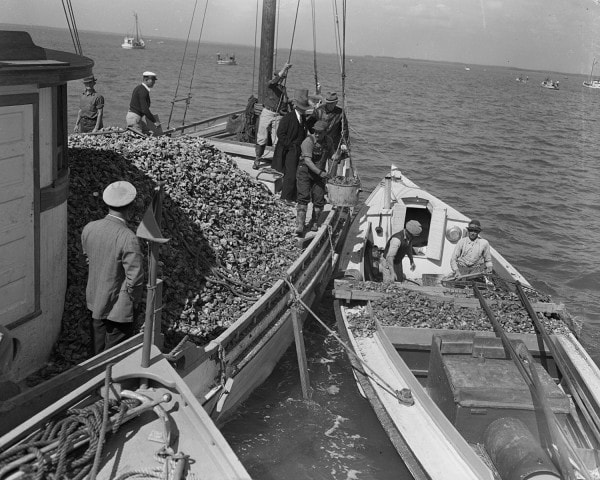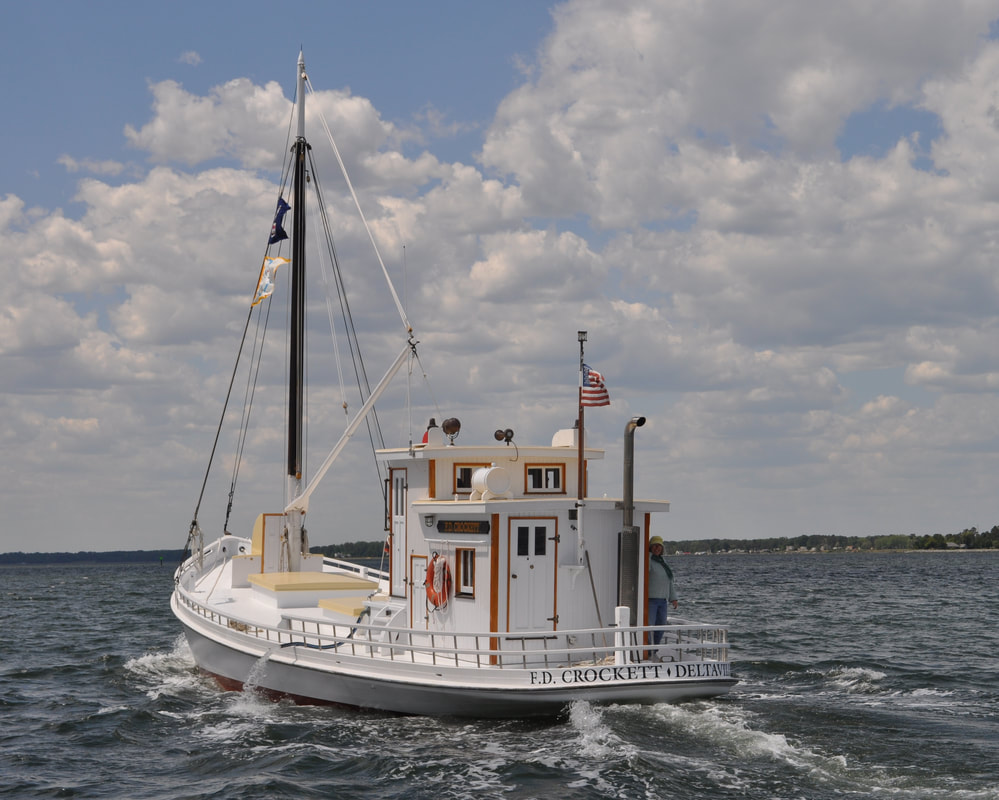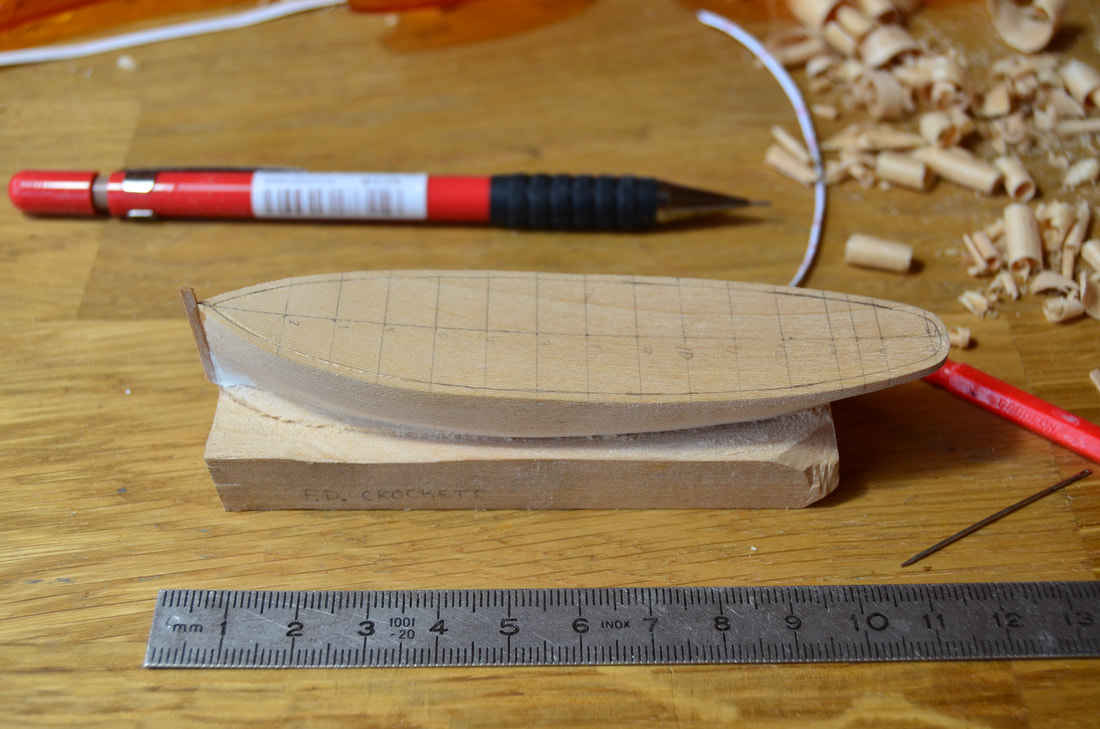|
Winter is in full swing and most boatyard, especially in cold climates, have seemingly closed down until the fist sign of Spring, when boat owners once again start itching for the wind in their sales. But, deep in the heated shops of many yards work continues, new projects are started, and all preps are made for Spring launch dates. Here, in my mini boatyard, work too rolls on, and I needed a good project to distract me and keep me going through the long winter months. After much debate and struggle over the perfect scene in bottle to build, I turned to the Chesapeake Bay and the area where I grew up to be my inspiration. I've visited nearly every maritime museum on the Bay, lived and cruised upon her waters on our forty foot sailboat, and studied the unique crafts that hailed from there. She holds an impressive past, and I felt it was time to celebrate one particular and historically significant side of the Bay, the watermen of bygone days, who year round worked, struggled, and survived on all that she had to give. Remember, it's winter...well imagine being out there on those wooden skipjacks, deadrise work boats, or small log canoes one hundred years ago, scraping oysters off the bottom...the north wind blowing, choppy waves splashing over the rail, and frozen creeks making just getting in and out hard. So, my idea is to show the scene of the watermen working and the boats they used. I needed a time period that would allow me to show a diversity of vessels of the Bay during a period in which they were working all together. I chose the 1930's. By then, the deadrise powerboats filled the harbors and buyboats were making their rounds, collecting oysters from hand-tongers who preferred selling them on the spot, instead of wasting precious time running back to harbors to unload. But those glorious sailing crafts, the bugeyes and skipjacks were still making there turn on the Bay, dredging the bars for oysters. My scene will be comprised of four different vessels, all of which are boats that still exist...yes the jewels of the bygone era that have been saved by museums, so future generations can enjoy them! The first is the F. D. Crockett of the Deltaville Martime Museum, of which I am very familiar with having worked in Deltaville for five years. I watched her transition from a barely floating hulk, to what I consider, the most elegant of the still remaining buyboats. She is one of two remaining log bottomed buyboats and was built in 1924 by Alex Gaines of Dare, Virginia. The second boat I chose to build was the Hooper Island Dovetail (also known as a Draketail). These slick deadrise workboats were built for oyster tonging and crabbing and have a unique rounded and sloping transom. Dorothy Lee was built in 1934 by Bronza Parks and has been recently donated to the Chesapeake Maritime Museum in St. Micheals. The third boat I will be creating is a Skipjack based on the E. C. Collier, built in 1910 at Deal Island, Maryland. The E. C. Collier is a permanently fixed exhibit at the Chesapeake Maritime Museum. The final boat, and most impressive, that I will be including in the scene is the Bugeye, Edna E. Lockwood. The Edna E. Lockwood was built by John B. Harrison in 1889 and is the last existing workboat of her kind. Like the Crockett, her bottom was constructed of nine logs and she is currently be expertly cared for by the Chesapeake Maritime Museum in St. Michaels. To begin my project, I spent a few weeks researching full time the four boats mentioned above. I'm lucky to have a great library of Chesapeake books and grateful to authors like Brewington, Chowning, and Burgess who have compiled photos and texts on the active oystering years on the bay. Plans and images were gathered from many different sources, and I scoured the photographic onilne archives of various institutes. The first ship I started on, was the F. D. Crockett. To date, I've carved her hull, and fabricated the pilot house. The pilot house is completely open and has an interior dimension allowing light to pass through the windows. With one coat of paint she is really coming along nicely. I'll be fabricating the little doors next and then it will be on to the railings, rigging and deck furniture. While, the coats of paint dried on the Crockett, I got busy working on the Hooper Island Dovetail. It's just a start but, she's coming along nicely. I've carved the exterior of her hull, then gouged out the interior down to a millimeter from the hull bottom. Once everything was sanded smooth a began laying the floor boards in place. Each floorboard is just a hair over a 1/2 of a millimeter wide. Next I'll be adding the deck, rails and cabin. So, what progress will I be making next...well, you'll just have to wait and see! Make sure to keep stopping by periodically as I will be updating the status of this project here on my blog. Thanks for reading!
6 Comments
|
Details
AuthorHeather Gabrielle Rogers: Shipwright for bottled miniature models. Archives
March 2018
Categories |










 RSS Feed
RSS Feed